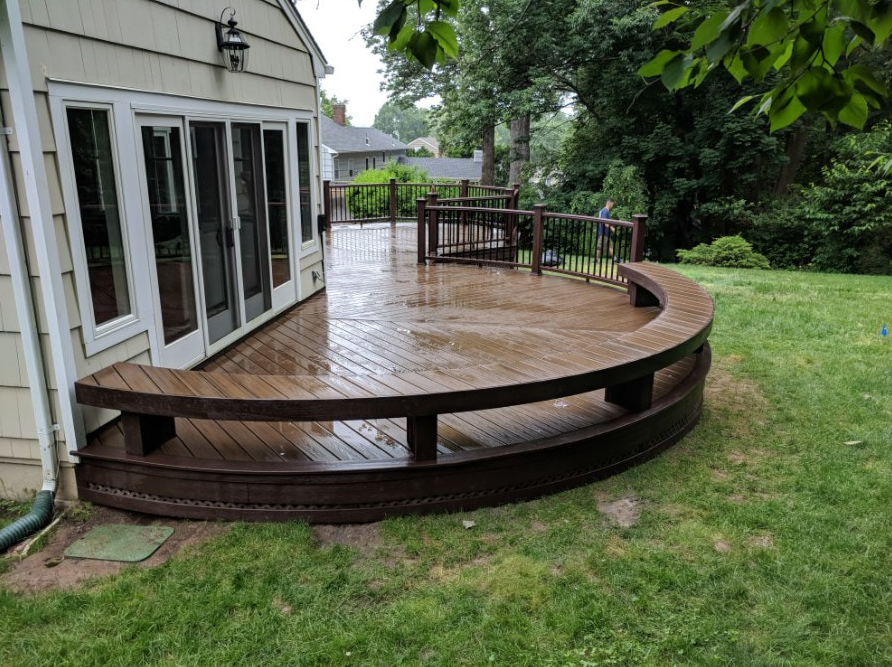|
Mold is always a pain to deal with. First, it can grow on almost any surface from concrete to vinyl to metal and ruin the beauty of any object it attaches itself to. Second, mold can be difficult to remove once it spreads to these surfaces. However, when mold begins to cover your beautiful deck it can not only obscure its attractiveness, it can move onto and attach itself to the rest of your home lowering the value of your entire property.
Some Facts about Mold Mold is the word we use to refer to number of fungi, algae, rusts, yeasts, or bacteria. Its attack on your desk starts on the microscopic level as tiny particles called spores float in the air land on your deck. If the conditions are right - and this usually means excessive moisture – then these particles can quickly begin to spread. And although the shaded sides of a deck are usually more vulnerable to mold growth, it can appear anywhere on others parts of your deck as well. On a side note, mold is not only unsightly, but it has also been linked to a number of serious conditions such as Hypersensitivity Pneumonitis, Chronic Inflammatory Response Syndrome and even Multiple Sclerosis. Preventing and Removing Mold The first step in preventing mold is to understand that all surfaces are vulnerable to some mold growth even composite decks. Next, owners should know that mold and mildew need four things in order to thrive: air, water, 40°-100° temperatures, and a food source. Substances like leaves, pollen and other organic materials are excellent food sources for mold. Therefore, you should thoroughly clean your deck on a regular basis even if you have not found mold. Second, consider how your deck is constructed. Decks made of untreated wood are extremely vulnerable to the formation of mold and mildew. Consider having your deck built from composite materials that inhibit the growth of mold. Then, be sure that you have adequate drainage between the planks on your deck so that water does not sit on it for too long after cleaning. (Note: Don’t use bleach. Bleach does not kill all molds growing on nonporous surfaces like wood.) As Westfield, NJ deck builders we can suggest other steps that you can take to prevent mold from becoming a problem such as giving you pointers on where exactly your deck should sit so that sunlight reaches it. (Ultraviolet rays from sunlight will kill mold spores.) Our custom deck builders in NJ have experience helping customers protect their decks and can repair them as needed. With these tips and our expert help, you can minimize the damage that this force can cause to deck and home. |
CategoriesArchives
June 2019
|

 RSS Feed
RSS Feed